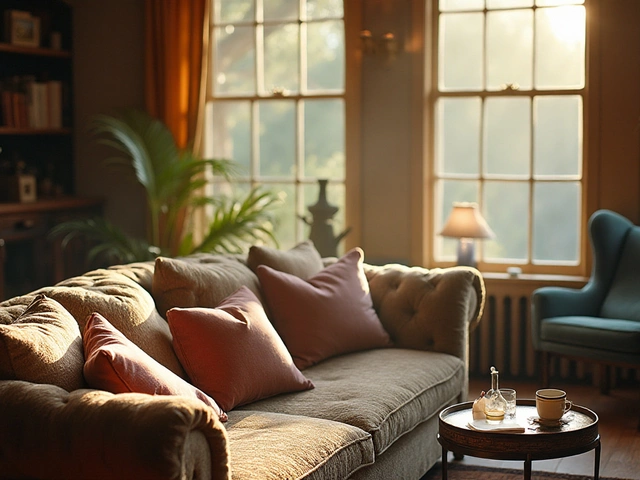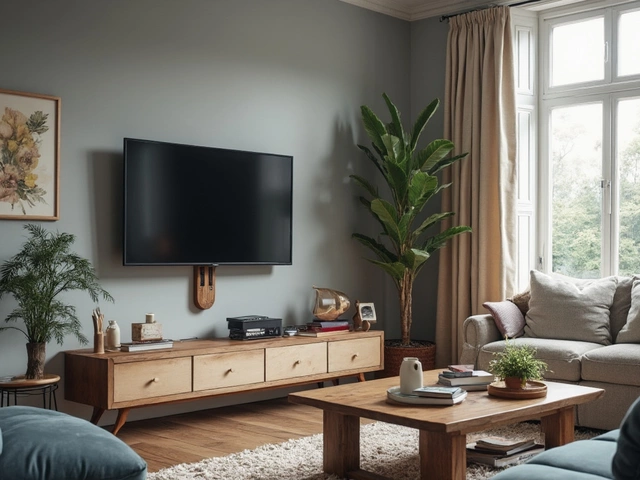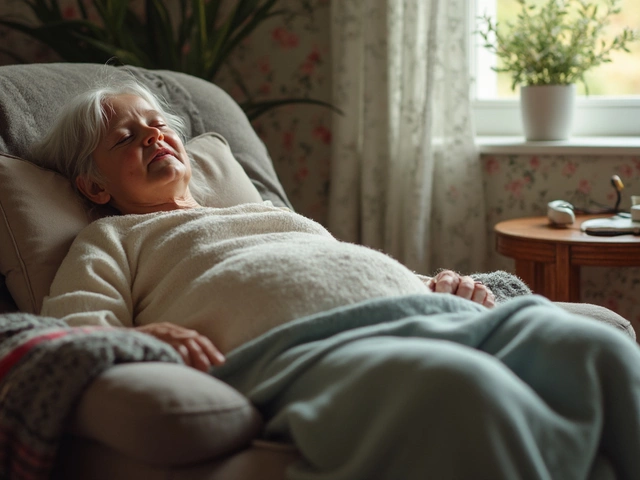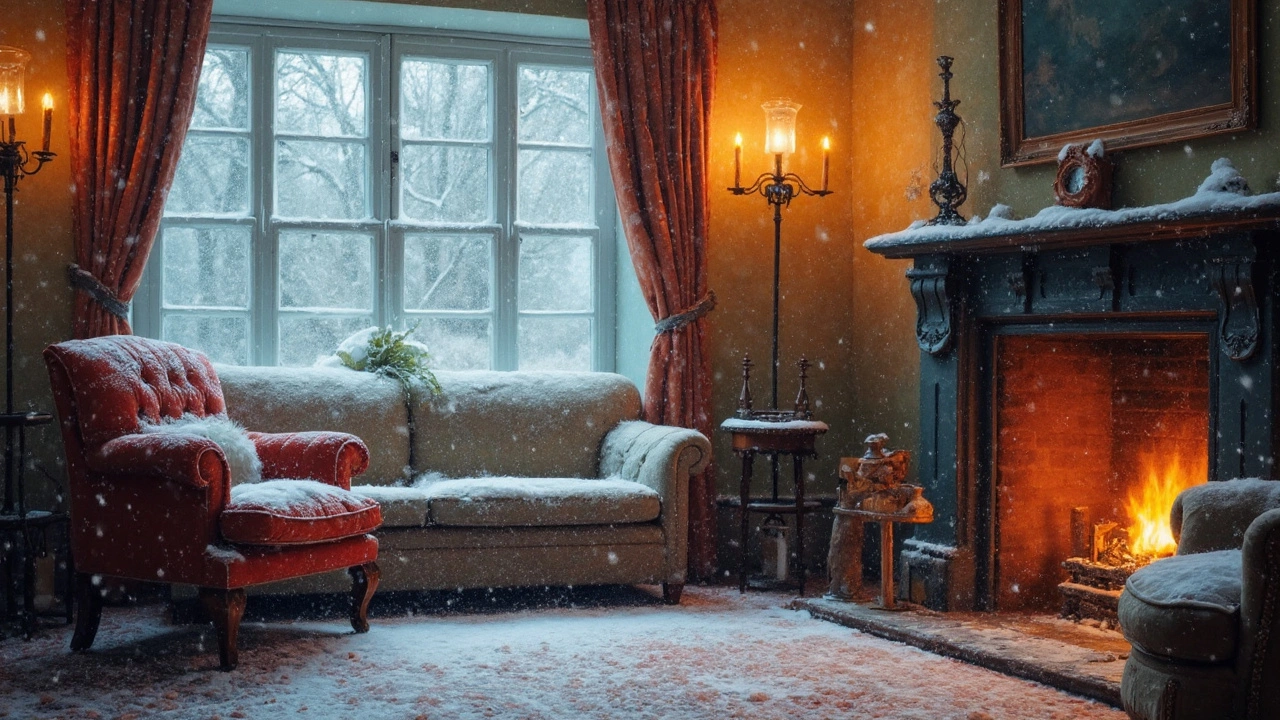 4
Apr,2025
4
Apr,2025
Ever wondered how much cold your furniture can handle? It's not like all furniture comes with a built-in temperature gauge. While we may focus on the beauty and comfort of our couches or tables, the harsh truth is they aren't impervious to changes in temperature—especially the cold. Before tossing your couch in a chilly garage or leaving a wooden desk in an unheated attic, it's key to know how cold is too cold.
Different materials play by different rules when it comes to cold weather. Wooden furniture, for instance, doesn't just sit pretty while the temperature dips. The wood can expand and contract, causing cracks or splits. On the other hand, metal parts can rust and deteriorate if not properly insulated or treated for low temperatures.
- The Impact of Cold on Different Materials
- How Temperature Fluctuations Affect Furniture
- Signs Your Furniture Is Feeling the Chill
- Best Practices for Cold Storage
- DIY Solutions to Prevent Cold Damage
- When to Call a Pro for Help
The Impact of Cold on Different Materials
When the mercury drops, your furniture might react in ways you wouldn't expect. Not all materials handle cold weather the same, so knowing what each one does can save your pieces from damage.
Wood is probably the most vulnerable. Cold temperatures cause it to contract, and in extreme cases, this can lead to cracks or warping. Think of it like your lips getting chapped in the winter; it's that unpleasant. If you've got antiques or anything prized made of wood, keeping them somewhere above freezing is smart. Humidity control is also a must, but that's a story for another day.
Then there's metal. It doesn’t crack, but it sure can rust. Cold can attract moisture, which means rust if the metal isn’t protected. Metal fittings on furniture, if not stainless steel, can go from shiny to shabby if you’re storing them in a dank basement.
Don't forget upholstery. Fabrics can be pretty resilient, but in the cold, the fibers tend to become rigid. It might not be immediately obvious, but extended cold exposure can degrade the fabric over time. Plus, any moisture can lead to mold, which is not a look anyone's going for.
- Plastics usually do okay in the cold. They might become a bit brittle, but it's not a big deal unless you're handling them in Arctic conditions. Just be gentle.
- Glass components? They should be fine unless there's a rapid temperature swing. In that case, the risk of shattering goes up.
Here's a quick memory aid: If it's something living, breathing, or uniquely crafted like wood or leather, the cold is a concern. If it's more industrial like plastic or metal, just watch for moisture.
How Temperature Fluctuations Affect Furniture
Temperature swings can be a real enemy for your furniture storage, especially if you're dealing with extreme highs and lows. Those sudden changes don't just make us uncomfortable—they're pretty hard on furniture too. Let's break it down a bit.
First up, let's talk about wood. This material can expand and contract with temperature shifts. When it's warm, wood can swell. When it gets cold, the wood contracts. Over time, this back-and-forth dance can lead to warping, cracking, or splitting. If you've got any heirloom pieces or anything with sentimental value, you definitely want to watch for that!
And it's not just wood that's vulnerable. Metal parts of your furniture, like screws and hinges, are not immune either. Cold can make metal brittle. Plus, if there's any moisture around, metal can start rusting. Suddenly, that vintage trunk isn't looking so classy anymore.
Upholstered furniture has its own set of woes. Changes in temperature—and the humidity that often comes with it—can mess with fabric fibers and even the foam inside cushions. You might notice the fabric losing its color or becoming brittle. So, when we're talking about furniture storage, keeping things at a steady temp is crucial.
Here's a quick reality check: most storage spaces should ideally keep temperatures between 55°F and 85°F. An environment that's too cold or too hot spells trouble, so it's worth investing in a space that offers climate control—especially for items you truly care about.
Signs Your Furniture Is Feeling the Chill
When Jack Frost starts nipping at your furniture, it won't just sit there suffering in silence. It's going to give you clues, and it's crucial to pick up on them before things get worse. So, what should you watch for?
First, check out any wooden pieces, like tables or bed frames. If they start making squeaky sounds or if you notice any odd gaps or cracks, that’s a sure sign the cold’s causing expansion and contraction. These little movements are more than just annoying; they can seriously mess with the structure.
Got leather furniture? The cold can make it dry out and become brittle. If your cozy leather couch gets extra stiff or starts showing small tears, that’s a red flag waving at you.
And let's not forget about metal parts! Rust happens when metal gets exposed to moisture in chilly conditions. So, if hinges or metal supports seem to be rusting or not working smoothly, cold storage could be the villain.
Keep an eye on any fabric surfaces, too. If they feel cold or damp, this can lead to nasty mold or mildew. And we all know no one wants a musty-smelling couch.
If your furniture shows one or more of these signs, it's screaming for some TLC. Address these problems before they grow into something you can't easily fix. Your precious pieces will thank you for it!
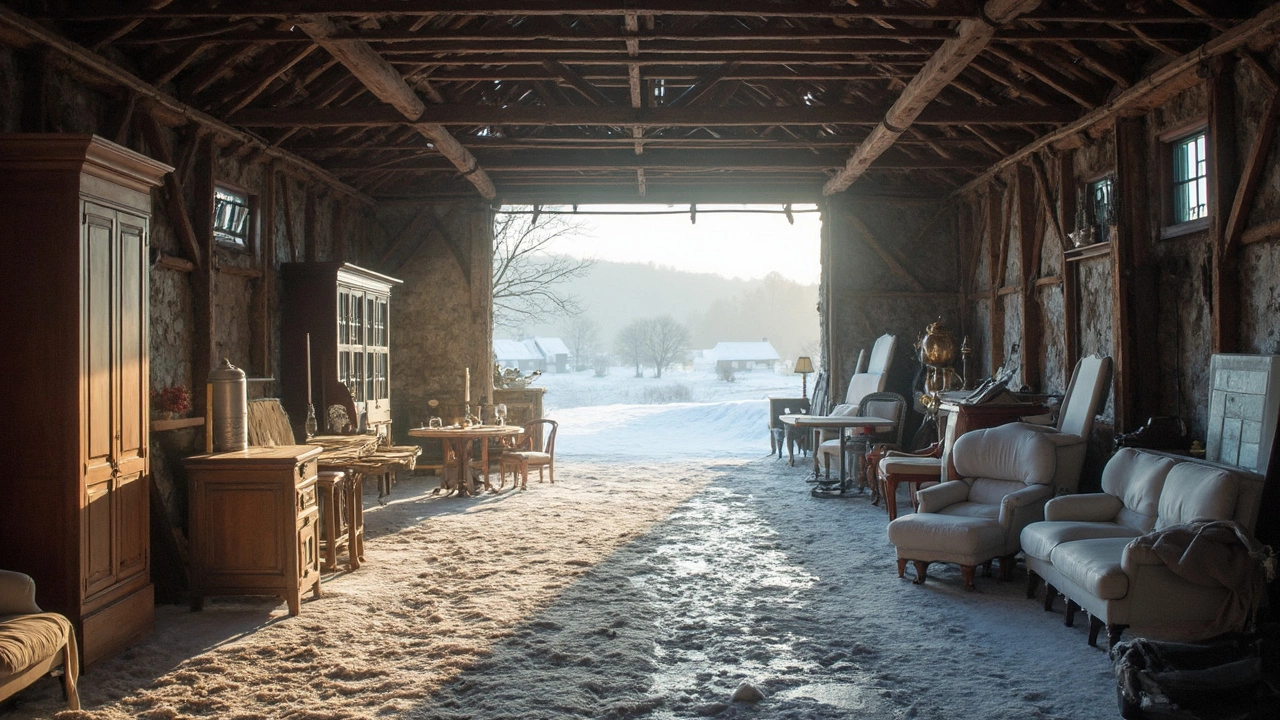
Best Practices for Cold Storage
Storing your furniture through the colder months doesn't have to be a game of chance. By following some solid tips, you can keep your pieces safe and sound until spring rolls around. Whether it's your beloved wooden coffee table or that vintage metal chair, knowing how to prep and protect it is essential.
First off, let's talk about location. Ideally, avoid spaces that dip below freezing. But if it's unavoidable, make sure the area is dry—moisture plus cold can spell disaster for most pieces.
- Wooden furniture: Apply a coat of furniture wax for added protection against cracking.
- Metal furniture: Use a rust inhibitor spray to keep corrosion at bay, especially in unheated locations.
- Upholstered items: Vacuum them thoroughly and consider using special covers that are designed to repel moisture and dust.
It's also a good idea to elevate furniture off the cold floor. Place pieces on pallets or even sturdy boards to prevent direct contact with freezing surfaces.
Sealing any drafts in your storage area can make a significant difference. Think of a garage door with a few cracks—those can let in cold air and moisture, messing with the temperature and condition. Weather-stripping or caulk can help keep things more consistent.
Keeping humidity levels steady is crucial. A low-cost hygrometer can help you monitor this, ensuring it remains between 30-50% to prevent wood from warping or metal from tarnishing.
And don't forget regular check-ups! Peek in every month to catch any developing issues early. Spotting a problem before it snowballs could save you major headaches down the line.
| Furniture Type | Protection Method | Recommended Action |
|---|---|---|
| Wood | Furniture Wax | Apply twice during winter |
| Metal | Rust Inhibitor Spray | Inspect and spray as needed |
| Upholstery | Moisture-proof Cover | Check for dampness monthly |
DIY Solutions to Prevent Cold Damage
Cold weather can be tough on furniture storage, but with a little effort, you can keep your pieces in great shape. The good news is you don't need to break the bank or become a DIY guru to make a difference. Let's look at some practical steps to help combat the cold.
First off, give your furniture a cozy layer. Try wrapping wooden or metal pieces in blankets or padded covers. These add an extra layer of protection and can help reduce temperature fluctuations.
- For wooden furniture, make sure it's sealed with a good quality wax or polish to lock out moisture.
- For metal items, consider a rust inhibitor spray to avoid any corrosion forming during storage.
Next, think about where you’re storing your stuff. Ideally, you want a space that’s dry and not subject to extreme temperature changes. If that's impossible, think about investing in a space heater or dehumidifier to control the environment a bit more effectively.
If you're using a garage or attic, elevate your furniture off the ground. Use pallets or blocks to keep your pieces away from cold, potentially damp floors.
For handy folks, building some kind of temporary insulation can be a game-changer. You can make simple panel-like structures with insulation from a home improvement store. Just prop these around your storage area to help maintain a more stable climate.
| Material | Suggested Action |
|---|---|
| Wood | Apply wax or polish; wrap in blankets |
| Metal | Use rust inhibitor; keep off the ground |
| Upholstery | Cover with breathable fabric to avoid mold |
Remember to check your pieces now and then. Regular inspections can catch issues before they become long-term problems. In case you're in doubt, consulting a pro could save time and money in the long run.
When to Call a Pro for Help
So you've tried everything, but your furniture is still feeling the effects of that biting chill. When is it time to bring in the pros? First off, if you notice severe damage like deep cracks in wood or serious warping, it's time to call a professional furniture restorer. These folks have the know-how to repair and maybe even reverse some of the damage caused by cold weather.
Let's talk about those villainous temperature swings that seem to enjoy wrecking havoc on your prized pieces. If your home or storage area suffers from big shifts between hot and cold, a climate control expert can help stabilize conditions, keeping your furniture happier and healthier. Effective climate control can mean anything from installing dehumidifiers to adding better insulation where it's needed most.
Sometimes, it's about knowing your own limits. If you’ve tried a bunch of DIY solutions like sealing cracks or using wraps, but issues persist, a pro could offer a fresh perspective and alternatives you hadn't considered. Plus, they can assess whether your current storage tips are doing more harm than good.
A more subtle sign that a pro is needed is recurring issues. Do you keep patching up the same problems every winter? An expert might identify ongoing factors like moisture levels or external damage that you haven’t noticed. Consistent repairs might mean it's time for preventive measures and a professional can provide long-term solutions.
For the curious minds, here’s a quick look at how maintaining furniture in different climates can affect longevity:
| Climate | Expected Furniture Lifespan Increase |
|---|---|
| Properly Controlled Temperature | 20-30% |
| High Moisture Areas Uncontrolled | -15-25% |
Last but not least, if you’re looking to buy new furniture that can withstand cold weather conditions better, a consultation with a professional can make a world of difference. They can guide you toward specific furniture materials designed to endure, saving you money and heartache down the line.
